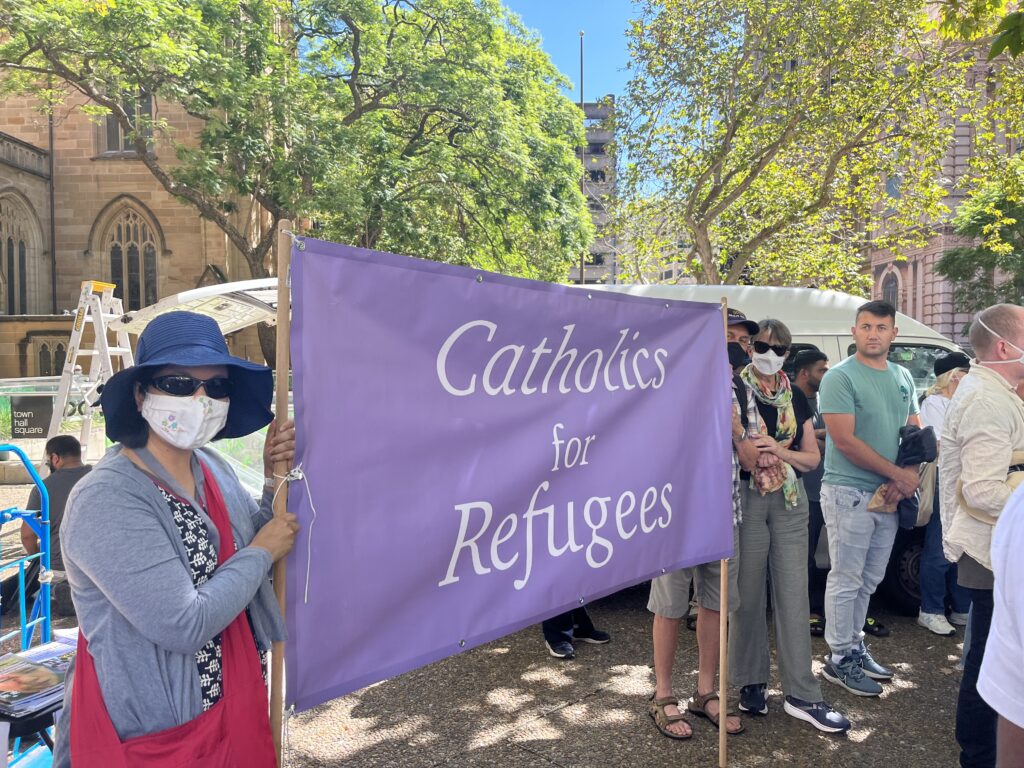“It is necessary to respond to the globalisation of migration with the globalisation of charity and cooperation, in such a way as to make the conditions of migrants more humane."
- Pope Francis
The true story of refugees and asylum seekers
Over the last twenty years, Australia has transitioned from being one of the most respected, skilled and generous states in welcoming asylum seekers to our shores, to an international country of concern.
A key strategy in managing this transition has been controlling the public story or narrative about asylum seekers. An example of this is seeing the term refugee displaced by erroneous terms like “queue jumper” and “illegal”.
As families seeking Australia’s protection were driven offshore to camps in Papua New Guinea and Nauru, their stories and faces disappeared with them. That’s one reason why getting a clear and honest picture of life for them and with them has been impossible.
To start creating a clearer and more honest picture of refugees and asylum seekers in Australia, we’ve compiled some of the most frequently asked questions about those seeking asylum and the situation in Australia. It is a poor substitute for the stories they could tell, their laughter and their tears, but for now it is what we have.
The forgotten people of COVID-19
After her husband sustained severe injuries and disability from war back home, Nahal, a heavily pregnant mother of three became the sole income earner for her family. Nahal had previously secured casual work in hospitality, being able to provide for her family and cover the $700 worth of weekly rent however, with the arrival of COVID-19 and lockdown restrictions, Nahal’s job was the first to go. With no income and no financial assistance from the Australian government, Nahal and her family are reaching new heights of destitution, hunger and are confronted by the possibility of homelessness.
For asylum seekers in Australia, COVID-19 is a crisis situation. Being excluded from government support packages, the most vulnerable are forced to completely rely on charity. With no Medicare card, healthcare is inaccessible, and refugees are at a far greater risk.
For all of us, COVID-19 is a frustrating time with lockdown restrictions tightening our social lives however, for others it is a time of survival.
What is the reality of the situation for refugees and asylum seekers who have called upon Australia for protection?
On 31 March 2020, there were 1,373 people in detention facilities. This included 58 women and 1,313 men. This has resulted in people seeking asylum now waiting several years for a decision to be made on their case.
The monthly statistics reveal that nearly 40,000 are still waiting for decisions. Even more people are still in the country awaiting deportation after a negative decision. During the COVID-19 pandemic their situation has become dire.

Why is taking action on refugee issues in Australia so important right now?
There are a number of reasons why now is the best time to achieve what has been almost impossible for to achieve in previous years.
Firstly, the “boats” have stopped coming for a number of reasons, one of which is the Australian Navy’s willingness to push boats back out to sea. That means the political power of threatening the electorate with the spectre of “thousands of people” waiting to descend on the nation from Indonesia has gone.
Secondly, the Christchurch massacre demonstrated to the Australian community how lethal it can be to keep whistling up racist and xenophobic fears – Australians felt ashamed for a brief moment.
Finally, the COVID-19 pandemic demonstrated how deeply interdependent all our lives are and has bought a softening to the heart of the community. We now know our worlds can be turned upside down within months if the situation changes.
What is Australia’s record / size of the global issue, etc. in comparison to other countries?
As numbers vary considerably across different countries from year to year, it is useful to look at these statistics over a 10-year period.
Between January 2009 and December 2018:
- Australia recognised or resettled 180,790 refugees
- Representing 0.89% of the 20.3 million refugees recognised globally
Australia’s total contribution for the decade is ranked:
- 25th overall
- 29th per capita
- 54th relative to national GDP
What is the economic cost to Australia for how we treat refugees now? I.e. How much is Manus Island costing?
Offshore detention costs Australian taxpayers as much as $573,000 per person per year. This was on top of the $9bn spent on offshore processing and onshore mandatory detention between 2016 and 2020.